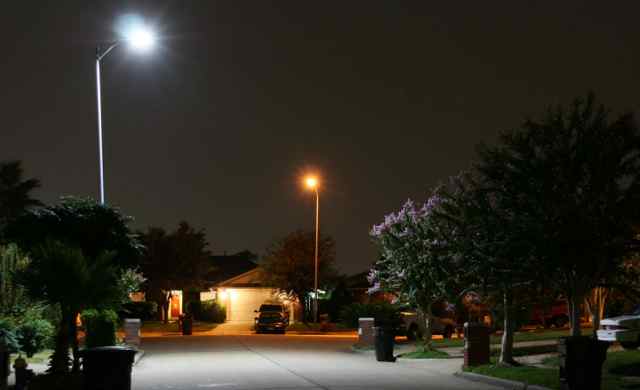forum
library
tutorial
contact

Philips Teams Up with
Mayors to Power City LEDs
by Staff
GreenBiz, January 27, 2014
|
the film forum library tutorial contact |

|
Philips Teams Up with
by Staff
|
 Washington, D.C. is following in the footsteps of a bunch of cities that have -- or are in the process of -- switching their lighting to LEDs. But unlike the other cities, Washington isn't paying the high costs of making the switch -- it is taking advantage of the first foray of Philips Lighting (which manufactures the LEDs) into offering a "lighting as a service" model.
Washington, D.C. is following in the footsteps of a bunch of cities that have -- or are in the process of -- switching their lighting to LEDs. But unlike the other cities, Washington isn't paying the high costs of making the switch -- it is taking advantage of the first foray of Philips Lighting (which manufactures the LEDs) into offering a "lighting as a service" model.
While the model is commonly used to finance building retrofits, it hasn't been used for lighting. Philips will pay the upfront costs of installation and be compensated through a performance contract -- the energy savings the retrofit produces.
In Washington, D.C., Philips will upgrade more than 13,000 lighting fixtures in all its parking garages at no upfront cost to the city and provide a 10-year maintenance contract. Philips will get paid from the $2 million in savings the LEDs are expected to provide each year. The project starts this spring and will take about a year.
The bulbs automatically will adjust based on the amount of natural light that's available, and software will alert Philips when repairs are needed.
"With digital lighting systems, we really need to break with conventional thinking and look to the services and delivery models of the software industry to understand the future of lighting and how we can remove one of the greatest barriers to adoption: the upfront costs," said Bruno Biasiotta, CEO of Philips Lighting Americas.
The push for LED lighting
A survey of 300 mayors released last week [PDF] by the Mayors Climate Protection Center shows that switching to LEDs is a high priority (82 percent), second only to public building retrofits (86 percent). LEDs and other energy-efficient lighting are the "most promising technologies" for reducing energy use and carbon emissions, they say. The most significant barriers are budget constraints (84 percent) and upfront costs (71 percent).
Even with these barriers, 23 percent of mayors say they will continue on their course of increasing efficiency, and 67 percent plan to invest more.
And while only 36 percent of cities currently have a comprehensive energy plan, a third more say they will have one within two years. Ninety percent of mayors surveyed say they will have a plan to keep vital services operating during sustained power outages within three years, and 75 percent already have developed such plans.
At the June meeting of the U.S. Conference of Mayors, they adopted a policy that affirms the importance and benefits of advanced lighting systems in cities. At this month's meeting, they formed a partnership with Philips Lighting to help mayors with this effort. Through the Mayors' Lighting Partnership, Philips will provide free energy audits, technical assistance and its new financing option.
New York City is converting all 250,000 streetlights to LEDs, and Boston and Los Angeles both recently finished their own city-wide lighting retrofits. It's estimated that the 35 million streetlights in the U.S. consume about 1 percent of all electricity -- and they are often the single biggest energy cost for cities.
Related Pages:
Philips Helps Lead the Charge on Next-gen Clean Tech Financing by Martin LaMonica, GreenBiz.com, 11/18/13
learn more on topics covered in the film
see the video
read the script
learn the songs
discussion forum
